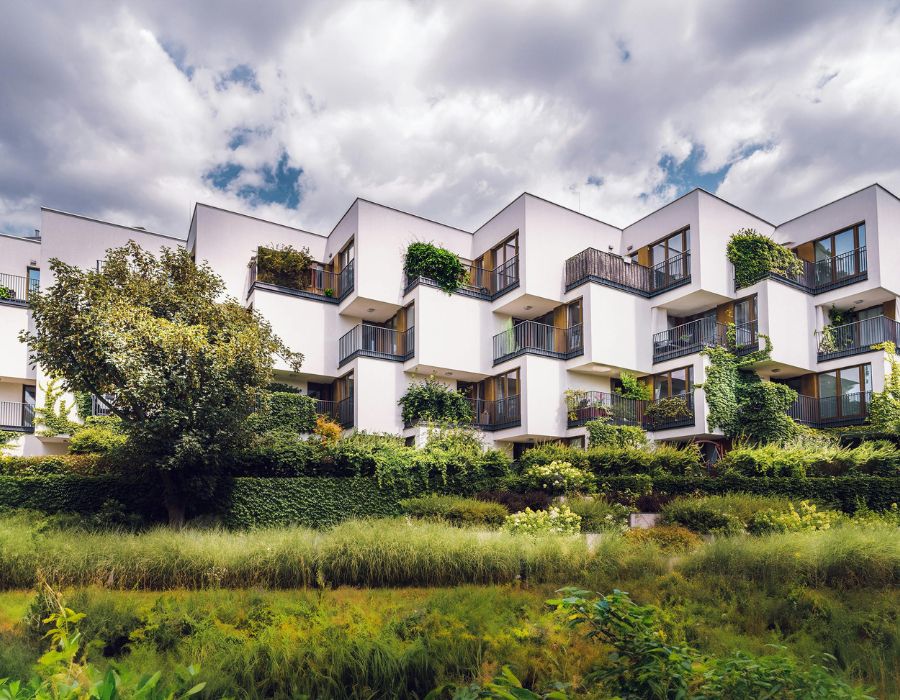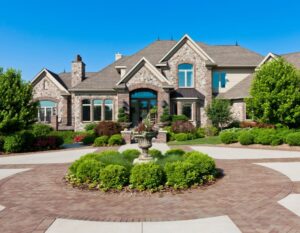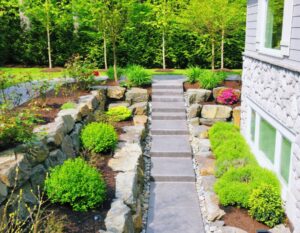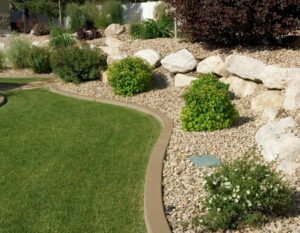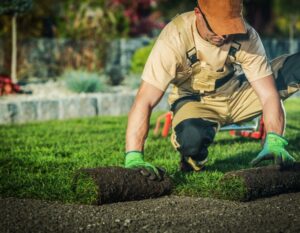Creating a beautiful outdoor space doesn’t have to come at the expense of the environment—or your wallet. With eco-savvy landscaping, homeowners can embrace sustainable yard design principles that conserve natural resources, reduce long-term maintenance costs, and still offer stunning curb appeal. Whether you’re starting from scratch or revamping your existing yard, green landscaping ideas rooted in environmental responsibility and smart planning can help you achieve a truly eco-friendly and budget-conscious outdoor oasis.
What Is Eco-Savvy Landscaping?
At its core, eco-savvy landscaping is about designing and maintaining outdoor spaces with minimal environmental impact. This approach combines eco-friendly garden planning with practices that save water, use renewable materials, and support local ecosystems. Instead of relying on heavy irrigation, synthetic fertilizers, or imported plants that struggle in your region’s climate, environmentally conscious landscaping focuses on working with nature rather than against it.
The Foundation: Sustainable Yard Design Principles
To build a yard that’s both eco-friendly and economical, start by rethinking your overall landscape layout. Sustainable yard design begins with:
1. Native Plant Selection
Choosing plants that are indigenous to your region is one of the most impactful decisions you can make. Native plant selection supports biodiversity by attracting local pollinators like bees and butterflies. These plants are also naturally suited to your area’s soil, rainfall, and climate, meaning they require far less water and maintenance.
2. Water Conservation Strategies
Efficient water use is essential in any green landscaping plan. Consider these strategies:
- Drip irrigation systems that deliver water directly to plant roots.
- Rain gardens that capture stormwater runoff and reduce erosion.
- Rain barrels to collect water for later use.
- Mulching, which helps retain soil moisture and suppress weeds.
These simple water-saving techniques can drastically reduce your outdoor water consumption.
3. Soil Health and Organic Maintenance
Healthy soil is the cornerstone of any thriving garden. Avoid synthetic fertilizers and pesticides, which can damage beneficial organisms and pollute local waterways. Instead, opt for:
- Composting yard waste and kitchen scraps to enrich soil naturally.
- Organic pest control, such as neem oil or introducing beneficial insects like ladybugs.
- Using natural mulch made from bark, straw, or shredded leaves.
Green Landscaping Ideas That Make a Difference
Whether you have a sprawling lawn or a cozy urban garden, these green landscaping ideas can enhance your outdoor space while reducing environmental impact:
1. Replace Lawn Grass with Ground Covers or Hardscaping
Traditional lawns are water hogs. Consider replacing grass with drought-tolerant ground covers like clover or creeping thyme. You can also use permeable pavers and gravel paths to allow rainwater to soak into the soil instead of running off.
2. Use Renewable and Reclaimed Materials
Eco-savvy landscaping promotes the use of renewable materials such as bamboo fencing, cork stepping stones, or recycled plastic edging. You can also repurpose old wood or bricks for raised beds or patios. These options are not only sustainable but often more affordable than newly manufactured alternatives.
3. Design for a Climate-Resilient Garden
As climate patterns shift, choosing plants and designs that can withstand weather extremes is more important than ever. Climate-resilient gardens incorporate hardy perennials, shrubs, and trees that can tolerate drought, high heat, or seasonal floods. This approach minimizes plant loss and replacement costs over time.
4. Install Shade Trees Strategically
Planting deciduous trees near windows and patios can reduce indoor cooling costs in summer by providing natural shade. In winter, these trees lose their leaves, allowing sunlight to warm your home. It’s a simple, passive energy-saving strategy that ties directly into environmentally conscious landscaping.
Eco-Friendly Garden Planning for Every Budget
Sustainability doesn’t have to be expensive. By making smart, incremental changes, you can transform your outdoor space affordably. Here’s how to plan your eco-savvy yard on a budget:
- Start small: Choose one area of your yard to focus on, like a native plant bed or a rain garden.
- DIY where possible: Many sustainable landscaping projects—like composting, mulching, or building raised beds—can be done yourself with minimal tools.
- Buy local: Local nurseries often carry native plants and may offer advice tailored to your region.
- Reuse materials: Salvage bricks, pallets, or stones from old projects or second-hand sources.
Long-Term Benefits of Eco-Savvy Landscaping
The advantages of eco-conscious landscaping go far beyond environmental impact. Here’s what you can expect:
- Lower utility bills due to reduced water and energy use.
- Increased property value as sustainable features become more desirable to homebuyers.
- Healthier outdoor spaces free from synthetic chemicals.
- Enhanced biodiversity, including birds, pollinators, and beneficial insects.
- Resilience to climate challenges, from drought to heavy rain.
Best of all, eco-savvy landscaping fosters a deeper connection with nature, transforming your yard into a peaceful, productive space that reflects your values.
FAQ:
Q: What sustainable landscaping practices can reduce long-term maintenance costs?
A: Using native plants, installing efficient irrigation systems, and applying organic mulch all reduce the need for watering, fertilizers, and constant upkeep—saving both time and money.
Q: How do native plants contribute to water conservation?
A: Native plants are naturally suited to the local climate and soil, so they require far less water than non-native species. Once established, they thrive on rainfall alone, reducing the need for irrigation. Their deep root systems also improve soil health and water absorption, helping prevent runoff and erosion. Using native plants in your landscape not only conserves water but also supports local ecosystems and reduces maintenance.
Q: Can eco-friendly materials be both affordable and durable?
A: Yes, eco-friendly materials can be both cost-effective and long-lasting. Options like recycled composite lumber, reclaimed wood, and natural stone offer great durability at competitive prices. These materials are designed to withstand weather and wear, often requiring less maintenance than traditional choices. Over time, they provide excellent value while reducing environmental impact—making them a smart investment for sustainable landscaping.
Q: What are the benefits of organic pest control in landscaping?
A: Organic pest control avoids harsh chemicals, making your landscape safer for children, pets, and pollinators. It relies on natural methods like neem oil, insecticidal soap, and beneficial insects to manage pests effectively. These approaches promote long-term soil and plant health, reduce chemical runoff, and support a balanced ecosystem. Organic solutions help maintain a healthy garden without compromising environmental safety.
Final Thoughts: Start Your Sustainable Yard Journey Today
Eco-Savvy Landscaping isn’t just a trend—it’s a meaningful movement toward healthier, greener living. By incorporating sustainable yard design principles, adopting eco-friendly garden planning, and using smart water conservation strategies, you’ll be investing in your property, your community, and the planet.
Whether you’re inspired by green landscaping ideas or ready to swap out your high-maintenance lawn for a climate-resilient garden, every step you take toward environmentally conscious landscaping helps create a brighter, more sustainable future.
So grab your shovel, your compost bucket, and a few native plants. It’s time to make your yard a haven of beauty, biodiversity, and balance—without breaking the bank.

